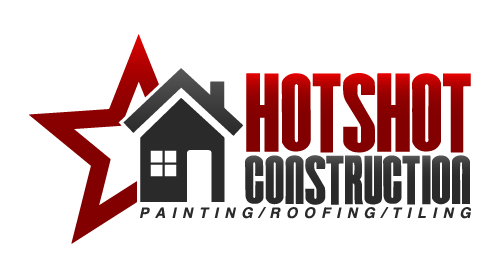What is Ice Damming and How Do You Prevent It?
What is Ice Damming and How Do You Prevent It?
For today’s post we wanted to talk about Ice Damming, as it is an issue that affects many home owners in cold regions like Calgary, and can be severely damaging for your home’s roof if left unchecked. Ice damming is basically snow that has melted from somewhere on your roof, and then frozen again before it has descended to the ground, which then plugs up the flow of water from your roof. There is a little more technicality to it, but that is the essence of an ice dam. When you see what you think are neat icicles, you might actually be seeing an ice dam. Unfortunately these beautiful structures may have a more dangerous reality. Depending on the cause, you may need a roofing company to help you put in a fix.
What is an Ice Dam?
As briefly mentioned, an ice dam is formed when the snow under a snowpack melts from your roof top, travels to an eave, and then freezes there. These may (especially over time) block the flow of meltwater down your eaves once they freeze them over. As more snow melts and then freezes as ice, the ice dam grows, and with it the danger to the structure of your home.
Why are ice dams dangerous for the home?
The concern with ice dams is relatively straight forward. If meltwater cannot find it’s why down the usual route through the eaves, it will find the next least path of resistance. Often times this path may be back up your roof under the shingles, and into the home and through the walls. Water that runs down the wall exterior will freeze, but water on the interior of walls will lead to water damage over time.
In some cases, the dams have gained such weight that the eaves have broken off the roof structure. However, these are much easier to deal with. A leak on the other hand can be very problematic, especially if this is something that has been happening over a number of seasons now. Water within the walls of the home or attic will lead to deterioration and often the growth of mold. If this gets bad enough, you’re going to have a very expensive remediation project on your hands.
How does it form?
While ice dams form because of below freezing temperatures, the real culprit Is poor attic insulation. You want your attic insulation to be sufficient enough so that heat from the living areas don’t stay in the attic. You want your attic to essentially be the same temperature as the outside.
Ironically, dry snow is a relatively good insulator; so when you have deep snow deposited on roofs, the layers closer to the roof will be insulated by the layers on the outside. When the bottom insulated layer is met with heat from a poorly insulated attic, it will melt. This meltwater then runs down and freezes once it heats the eave.
Mitigating ice dam formation and damage
The most effective way to prevent ice damming is by ensuring that your roof and attic have been built well and insulated properly. This will depend on whether you’re living in an older home, which was likely built to different building standards; or whether you’re building a new home or otherwise having your roof replaced.
Attic Insulation
Ironically, an uninsulated attic will not create ice dams, as the constant flow of heat through attics will typically melt whatever snow lands on the roof, leading to minimal accumulation. However with the Alberta climate, this would lead to some pretty serious heat loss over the winter months, and even so on cooler summer evenings. It would also lead to sweltering heat during the summer months as an uninsulated attic will do nothing to keep the cool air within the home. So either your home would be unbearably hot on certain days, or your AC unit would see extra strain on its function. Realistically, with Alberta building codes you would not see an uninsulated attic these days anyway. Therefore the culprit is typically poor insulation, and increasing the R value of your attic should be your first step. Generally this is something you should leave to the professionals, especially if you will be using spray foam. Natural Resources Canada has a good overview of attics and insulation to get you a little bit familiarized. For attic insulation, a value of R-31 is considered good, R-50 is better, and R-60 is best.
Ventilation and Air Sealing
Aside from attic insulation, the other major way to mitigate ice dam formation is by making sure that the attic ventilation is sufficient and that you do not have have any house heat leaking into the attic. Proper air sealing will minimize warm air entering from the house, and proper ventilation will ensure that warm and humid air is removed as efficiently as possible. This will minimize the chance of condensation forming on the inside of the attic, as well as melting any snow that is in contact with the roof surface on the outside.
1 square foot of ventilation (called Net Free Area) per 300 square feet of attic space is the is the minimum requirement. Ideally this is split between the intake (soffit) vents and outtake (roof) vents. Soffit vents are done by the length of the soffit, however the ratio for the roof gives us a minimum of 3 roof vents per 300 square feet of attic space.
Air sealing prevents the warm air from entering the attic, but it can be difficult to plug up all of the air leaks depending on how your home was constructed. Basically, you want to close up all areas that are open to the attic. You just need to use surface appropriate caulking to close the gaps, however the gaps could be numerous.
Here is a selection of areas to seal:
- Around plumbing stacks and other pipes
- Around wires or lighting fixtures that protrude through attic floor
- Any ducting that extends from inside the house into the attic
- Any cracks on the interiors of ceiling and inner wall partitions
- Any cavities not sealed or that have a cracked top plate at the top of interior and exterior walls
- Attic hatches
- Shared walls of multifamily buildings have gaps and can be sealed
Again, the Natural Resources Canada webpage has good info on air sealing.
Roof Construction
In the case of ice dam formation, proper roof construction will go a long way in helping prevent water damage. This is where selecting a quality contractor is important. If you are getting quotes, and one of them is significantly cheaper, there is a good chance that quality may be lacking on that contractor’s part. Savings a thousand dollars now may cost you tens of thousands of dollars later. Ask your contractors about the following components. They are all quite cheap compared to the shingles and labour, so skimping on them won’t do you many favours. Some contractors may leave them out and not even tell you if you don’t ask, so make sure to get a statement of what products will be used in the roofing process.
Synthetic Underlayment
Modern air, vapour, and water barriers are made of synthetic materials and provide much greater protection against damage and leakage than traditional felt or asphalt underlayment. The underlayment will also provide a second line of defence against leakage – the first being your shingles. In case of shingle deterioration, it will also provide another barrier to prevent leaks and air/moisture from entering the attic. Proper installation will provide additional protection against ice damming by controlling air flow of the attic. We only use high quality products like Rhino Roof to ensure that the underlayment will last. Make sure you ask anyone giving you a bid about underlayment. Some contractors don’t use it to save on cost, but it is absolutely detrimental to the longevity of your roof.
Drip Edge
Drip edge is flashing that is placed under the shingles on the overhangs above eaves. It extends past the overhang of the shingles, giving the overhanging shingles integrity, but more importantly giving water an extended runoff away from the shingles and roof structure. This will prevent water running down the walls, but also prevent it from running back up deteriorated shingles. Drip edge works great with synthetic underlayment to maximize protection from water damage.
Shingles, Vents, and Flashing
These days, it’s not so much about the shingles as it is about how they are installed. Generally all of todays shingle products are high quality, although we do have preferred brands. Simple things like nailing patterns and vent installation can lead to attic leaks if done improperly. Nailing needs to be done in a way that the nails are either covered by the next row of shingles, or caulked properly in sections where there isn’t an additional shingle row to be added. Likewise, vents need to be nailed and protected properly to ensure there wont be future leakage. Any exposed nails will basically guarantee a leak – years of weather will rust them away and water will eventually make its way into your attic. The same goes for flashing that is installed. Improper installation of flashing can cause it to be pulled up in extreme weather events. This will expose sections of your roof that can be infiltrated by water, and otherwise let moist air in that will cause issues later.
In closing
While there is definitely a lot of info when it comes to ice damming issues and prevention, we hope that our post has given you a lot to think about and the know-how to spot any future problems, should they arise. While any roofing issues can be a delicate matter as you want it done right, we always happy to lend an ear and provide advice whenever we can. Feel free to give us a call or shoot us an email if you have any concerns regarding your roof, and our team at Hotshot Construction we will be happy to give you a hand.

